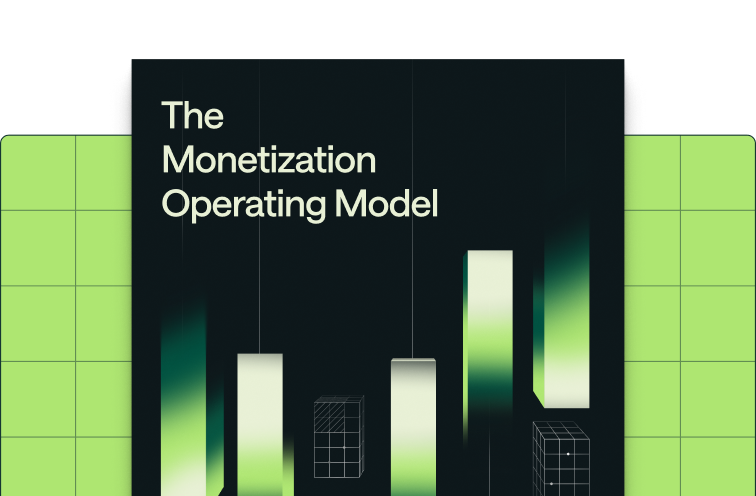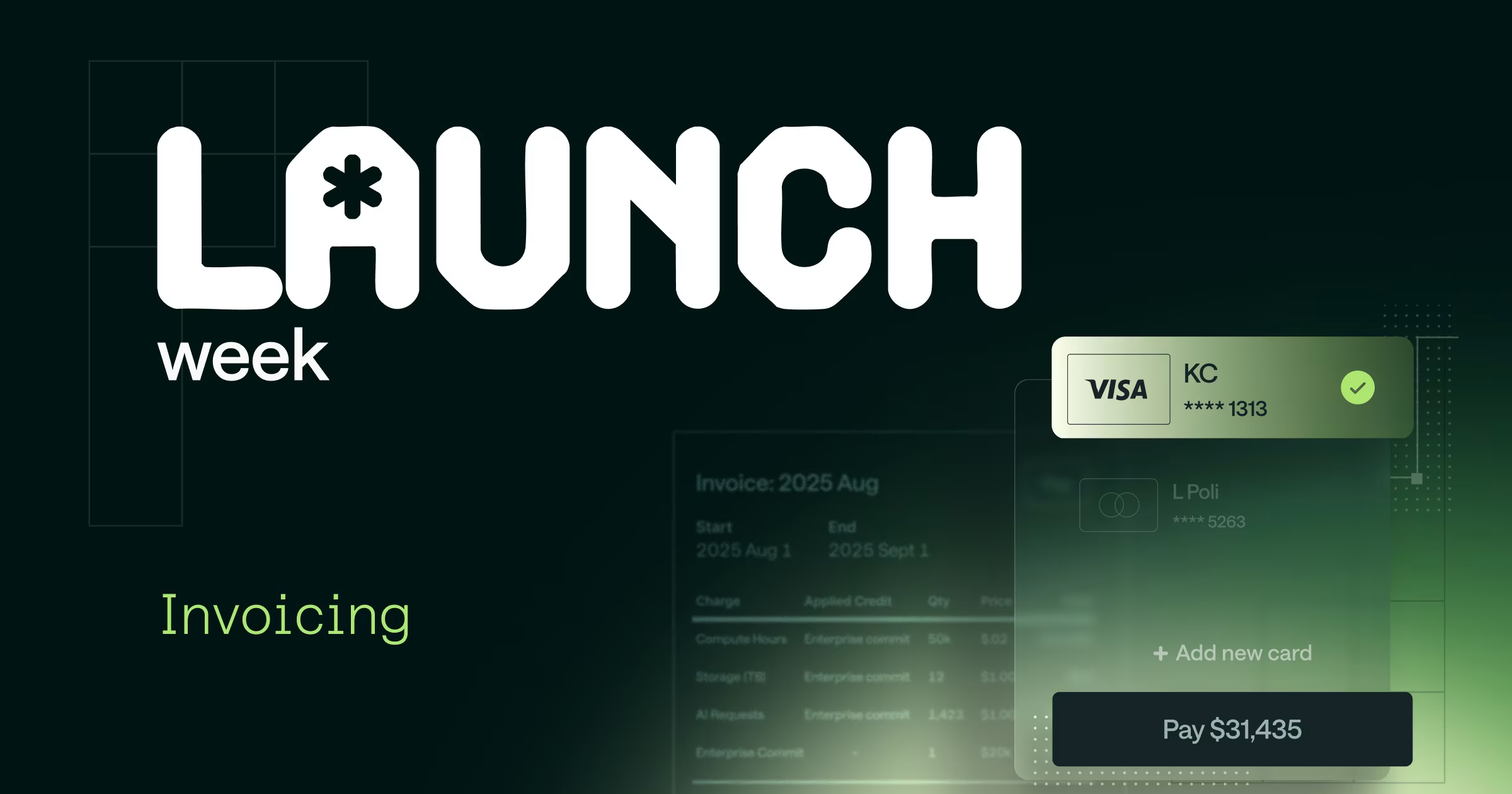Share
Companies are launching AI products without systems to track usage by seat or billing period, leading to revenue leakage and teams forgiving overages because they can't enforce entitlements in real-time.
The fundamental problem isn't choosing the right API pricing strategy. It's having infrastructure that can actually support it.
Legacy billing systems force binary choices between pure subscription or pure usage models, while AI API monetization requires flexible infrastructure that supports multiple pricing elements simultaneously. Companies need base subscription fees for platform access plus usage charges for API consumption, but their billing systems weren't built to handle both approaches within a single contract.
The result is manual workarounds, spreadsheet overrides, and engineering teams pulled into billing support instead of building product features. Meanwhile, competitors with modern infrastructure capture market share through pricing flexibility that manual systems can't match.
Here's what companies need to know about AI API monetization and the infrastructure required to make it work at scale.
{{widget-monetization-whitepaper}}What is AI API monetization?
AI API monetization transforms AI capabilities into revenue-generating products by charging third-party developers, partners, or customers for access and usage.
Unlike traditional APIs, AI APIs require precise metering of token usage, model access, and computational intensity. A single user prompt might generate thousands of tokens through a heavyweight vision model, while another processes a few dozen tokens through a lightweight text classifier. Companies that meter only API calls miss the economic reality entirely.
Monetization may target developers directly, or be embedded in broader B2B service contracts. When third parties build business-critical applications using your AI APIs, they're extracting measurable value that justifies direct monetization based on actual computational resources consumed.
APIs have transitioned from mere technological assets to valuable products embedded in everything from mobile apps to cars and fitness devices. The shift toward AI API monetization reflects this evolution, where machine learning capabilities become core revenue drivers rather than supporting features.
The right monetization model can significantly expand a business's market presence, create new opportunities, and grow recurring revenue. Unlike traditional APIs that extend existing products, AI endpoints often become the primary revenue driver through programmatic access to machine learning models.
Success depends on structuring API access in a way that delivers value while maintaining security and integrity of the core platform. Modern AI API monetization requires real-time usage tracking, flexible pricing models, and customer transparency around token consumption and computational costs.
Why API monetization doesn't work with legacy infrastructure
Legacy billing systems force binary pricing choices between pure subscription or pure usage models, creating artificial constraints that prevent optimal pricing strategy evolution for AI APIs.
Most billing systems make you pick one pricing approach and stick with it, preventing optimal pricing strategy evolution. This becomes particularly problematic for AI APIs where companies need hybrid models—base subscription fees for platform access combined with usage charges for token consumption or computational resources.
Companies launching AI products lack proper tracking systems
Companies launching AI products lack systems to track usage by seat or billing period, leading to revenue leakage without enforcing entitlements. Teams end up forgiving overages because they can't measure or bill for consumption above included limits in real-time.
Traditional platforms create operational challenges: no customer-facing spend visibility leads to surprise bills and poor developer experience. Without real-time metering, API consumers can't predict or control their costs, leading to billing disputes and churn.
Legacy systems can't handle hybrid pricing complexity
Legacy billing systems can't handle hybrid pricing models that modern AI products require—they need flexible infrastructure supporting multiple pricing elements simultaneously. When companies try to layer token-based charges onto subscription systems, they end up with disconnected workflows and manual reconciliation.
Pricing experimentation becomes blocked because teams can't test or iterate pricing models without risking breakage in brittle billing logic. Every rate adjustment requires engineering work when pricing logic is embedded in product code.
Engineering teams resist pricing changes
Engineering teams resist pricing changes because they own billing infrastructure, creating bottlenecks for business innovation. Every pricing change becomes a development ticket that competes with product features for engineering resources.
This creates organizational tension between business strategy and technical implementation. Teams know their current pricing doesn't align with customer value, yet they can't iterate without full re-implementation—a pattern that freezes pricing strategy exactly when AI markets demand rapid adaptation.
API monetization strategies for 2025
Successful AI API monetization requires blended approaches that combine multiple pricing models with real-time metering and flexible billing infrastructure.
Per-token billing: precise cost alignment
Charge based on actual tokens processed by AI models—allows precise cost alignment with computational resources and enables flexible scaling for variable workloads. OpenAI's token-based pricing exemplifies this approach, with different rates for input and output tokens based on actual processing costs.
This model works when API value scales directly with consumption and customers accept variable costs for precise resource alignment. Implementation requires real-time token tracking and customer dashboards showing consumption patterns and projected costs.
Model-based pricing: tiered capability access
Different rates for different AI models based on their computational complexity and capabilities—premium models like GPT-4 command higher prices than lighter alternatives. This approach lets companies monetize innovation by creating higher pricing tiers for more capable models.
Model-based pricing works when products offer multiple AI models with clear capability differences that customers understand and value. The operational requirement: billing systems must track which model served every request for accurate cost attribution.
Rate-limited tiers: predictable revenue with usage controls
Subscription tiers with different request rate limits and monthly quotas—balances predictable revenue with usage-based value delivery. This approach provides customers with budget certainty while reflecting underlying computational costs.
Rate-limited plans solve the predictability problem by packaging monthly token quotas with usage controls. Enterprise customers get forecastable invoices while preserving the ability to scale consumption based on actual needs.
Freemium with AI-specific limits
Free tiers for AI APIs typically include limited monthly tokens or requests, with paid upgrades unlocking higher-performance models and increased rate limits. This reduces adoption barriers while demonstrating AI capabilities that drive conversions to paid tiers.
Effective freemium models provide enough free usage to showcase API capabilities without consuming expensive GPU infrastructure. Clear upgrade incentives emerge when developers hit meaningful computational limits during application development.
Hybrid approaches: subscription plus usage components
Combine subscription and usage components—B2B products benefit from predictable monthly minimums with per-token billing for usage above included quotas. This balances revenue predictability with consumption-based expansion that aligns with customer success.
Hybrid models work especially well for enterprise AI APIs where customers want predictable base costs with the ability to scale token consumption based on business growth. Implementation requires billing systems that reconcile subscription entitlements with real-time usage streams.
Building sustainable AI API revenue through strategic implementation
API monetization requires upfront infrastructure investment, but companies that build flexible billing systems today will capture disproportionate market share as the AI API economy continues growing rapidly.
Early adoption creates ecosystem lock-in effects that become harder to replicate as markets mature. Companies with flexible billing systems can iterate pricing strategies while competitors remain stuck with legacy constraints that prevent optimal monetization of AI capabilities.
Infrastructure requirements for AI API monetization
Sustainable API revenue depends on three infrastructure components: accurate usage measurement that tracks token consumption in real-time, flexible pricing configuration that supports multiple models simultaneously, and transparent customer experience that builds trust through usage visibility.
Each component must work reliably at scale without manual intervention. Real-time usage tracking captures API consumption as it happens, enabling accurate billing and customer transparency without introducing latency or performance degradation.
Usage attribution connects token consumption to specific customers, applications, and billing periods. This requires customer authentication, session management, and data aggregation that scales with unpredictable AI workload spikes.
Flexible pricing enables competitive adaptation
Pricing configuration systems allow business teams to adjust rates, tiers, and promotional offers without engineering dependencies. This flexibility enables rapid response to competitive moves and customer feedback in fast-moving AI markets.
AI API pricing often involves complex calculations including token tiers, model selection premiums, volume discounts, and customer-specific terms. Modern billing systems must handle this complexity accurately and transparently.
Pricing experimentation capabilities enable A/B testing different models with customer segments. This data-driven approach optimizes revenue while improving customer satisfaction through better value alignment.
Customer transparency prevents billing disputes
Developer dashboards provide real-time visibility into token usage, model selection, and projected bills. This transparency helps customers optimize their applications and manage computational costs effectively.
Spending controls allow developers to set usage limits and receive alerts when approaching thresholds. These features prevent bill shock while enabling confident application scaling with predictable cost management.
Clear billing explanations help customers understand token charges and optimize usage patterns. Transparent pricing builds trust that supports long-term customer relationships and higher lifetime value in competitive AI markets.
The AI API monetization imperative
AI API monetization has shifted from optional revenue optimization to competitive necessity. Companies that delay implementation risk losing market position to competitors with more flexible pricing capabilities that better align with AI value delivery patterns.
The infrastructure investment required for effective AI API monetization pays dividends through revenue diversification, customer retention, and ecosystem growth. Early adopters create competitive moats that become harder to replicate as AI markets mature and pricing expectations solidify.
Success requires moving beyond simple pricing decisions to building comprehensive monetization systems. Companies need infrastructure that supports any pricing model, enables rapid experimentation, and scales with AI API ecosystem growth.
The choice is clear: invest in flexible AI API monetization infrastructure now, or watch competitors capture market share through pricing capabilities that manual systems can't match.
{{widget-monetization-whitepaper}}










%25202%2520(1).png)